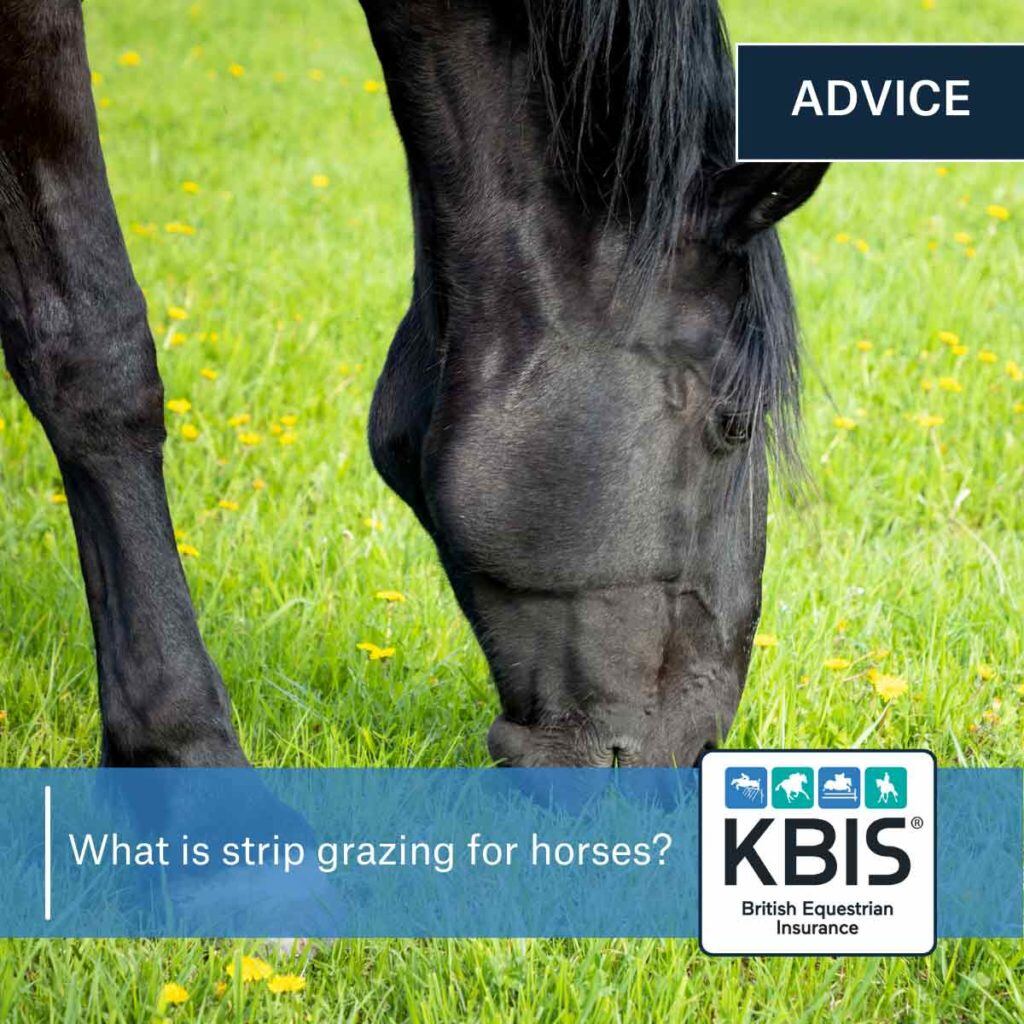During the spring and summer when the grass seems to grow in the blink of an eye, it can be difficult to keep ponies and good doers trim. For some, a simple sniff of some grass may make them pile on the pounds which is where strip grazing can come in handy. This method is one of the most effective ways to reduce access to grazing, particularly for those with lush pastures or limited access to stabling for part of the day. Keep reading to find out what strip grazing is, how to do it and the many benefits for both your horse and your paddocks.
What is strip grazing?
Strip grazing is an easy method of restricting grazing for horses and ponies that are prone to weight gain. This method involves fencing off a section or ‘strip’ of a paddock with electric tape and then moving the fencing regularly to allow access to fresh grass. You can either have one fence that you move or include a back fence too which can be effective when grazing land is limited as it will ensure that there’s always a section that’s recovering and growing at a healthy rate.
When it comes to how often you should move the fence, it will depend on several factors including how fast your grass grows – in the average spring and summer grass grows five times faster than late autumn grass – the number of horses that are grazing on it and your horse’s appetite.
Setting up your strip grazing
To get started with strip grazing there are a few things you’ll need:
- Electric tape: it’s important to get electric tape specifically for horses as this will have a breaking point in case they get tangled in it.
- Electric fencing posts: these come in a variety of heights so it’s important to choose the right height for your horse. If they’re too short they may be able to reach over to the other side to get more grass than they’re supposed to, or some may even have a go at jumping over it.
- Electric fence energiser: these come in solar-powered and battery-powered options. You may not think you need one of these, but horses are masters at being able to tell if a fence is on or not and if they’re particularly crafty they may try and get to the other side by pulling fence posts up, ducking under them or leaning over them.
Benefits of strip grazing
There are several strip grazing advantages for both your horse and your pastureland. Here are some of the main benefits:
1. Helps with weight management
One of the top benefits to strip grazing is that it reduces their access to grass which in turn, helps with weight management. Consuming too much grass can lead to obesity as it’s very high in fructans which are soluble carbohydrates. Obesity is a big problem in equines and if left unchecked, it can lead to health issues such as laminitis, joint issues and respiratory problems.
If weight management is your goal with strip grazing, you may need to use a smaller strip to restrict how much grass they consume, and it may be necessary to use additional methods such as a grazing muzzle if grass growth is rapid or bring them in for a portion of the day to have a break from the grass.
2. Protects your pastureland
Aside from helping your horse to stay trim, strip grazing is great when pasture is limited and can prevent overgrazing paddocks as it allows for grass to rest, recover and continue to grow at a healthy rate. Overgrazing can cause issues with your land in the long run as it will result in slower grass growth and reduced quality as horses will eat the nicer patches first, often creating bare sections which will be quickly filled with weeds.
3. Can help to graze down new fields
If you’re moving your horse to a new field with a lot of available grass, strip grazing can be useful as it will allow them to get used to the extra grass slowly, so they don’t gorge themselves and gain weight too quickly.
4 top tips for strip grazing paddocks:
- Poo pick regularly: this is very important for smaller paddocks as not only will it keep your grass healthier and prevent dead patches, but your horse will also benefit as this will reduce the number of flies.
- Include a water source: if you’re going to be using a back fence, make sure you include a water source such as a large bucket or lightweight trough that you can move along with the fence.
- Monitor their weight and body condition score: this is vital if you’re using strip grazing to reduce grass intake. Monitoring their weight and body condition regularly will help to inform you if they’re still getting too much grass and whether additional methods need to be used.
- Have spare electric fencing posts and tape on hand: it’s a good idea to make sure you have extra posts and tape in case of breakages.
- Don’t make your strip too small: if you’re strip grazing more than one horse or pony, ensure the strip is large enough so each horse can have their own space to prevent pressure on herd dynamics which may result in confrontations.
That’s our guide to strip grazing for horses and the advantages that go with it. Looking for more advice on caring for your horse? Find out when it’s too hot to ride a horse, next.


